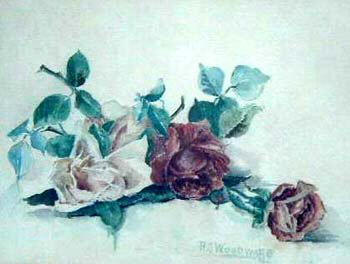Lena Putnam and Abbie's Story
Part 2: Through the House
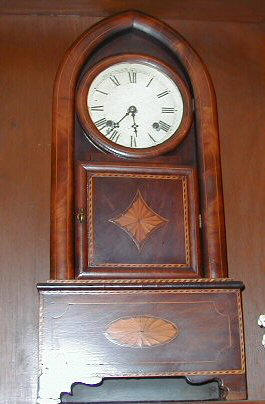
The antique wooden kitchen clock
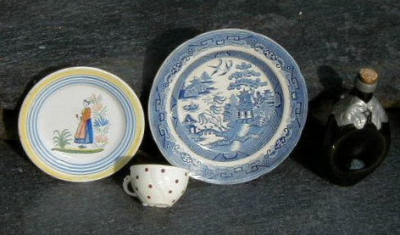
Some of the dishes I remember from those days
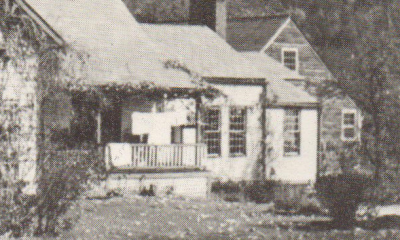
Morning laundry hung out to dry on back porch
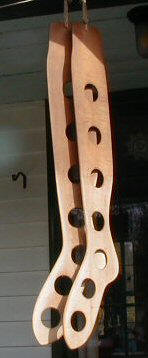
Stocking stretcher
We had to stretch his socks on a stocking stretcher. You dont see too many of those anymore Shirts and most other items were sent out. The Modern Laundry picked up and delivered once a week. Another of my jobs was to put the laundry away when it came back. I spent a lot of time at the dining room table, doing my homework, but I must have been easily distracted. I can close my eyes and see it all: a small buffet between the windows looking out to the service yard, a rocking chair and small candle table to the left of the fireplace and a picture of ladies in old-fashioned dresses hanging on the wall.
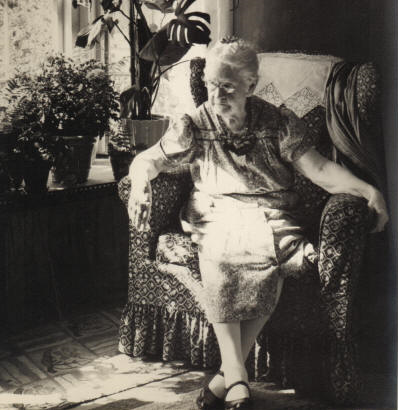
Gramma Woodward in her chair in front of the bay window
She wore a lace cap on her head (I found out later it was to cover her thinning hair). Upstairs in the front bedroom, she had Mr. Woodward's drawings and Valentines from when he was a boy tucked around her mirror.
As she got older, she began to get a little confused. My uncle, Ray Stone, became the hired man after Uncle Fay left, and his wife, Marge, helped look after Mrs. Woodward, to keep her from wandering off. Marge wasnt very nice, and she got Mrs. Woodward agitated. Mrs. Woodward finally had to go to a nursing home.
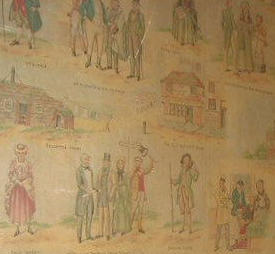
Photo of wall paper in the Dickens room
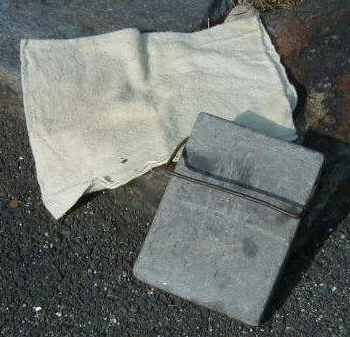
Soapstone footstone and cloth cover used to keep
Mr. Woodward's feet warm in the open Packard
A bedroom wing had been added on to the house when Mr. Woodward first moved there, because, of course, he could not go up and down stairs. I recall a cherry desk between the 2 long windows, looking out to the terrace, a dresser or bureau, and ruffled curtains at every window except the bay window, which had long draw drapes. Mr. Woodward got himself into bed at night and up in the morning. We never had to help him. All his strength was in his arms, so he could manage it. I helped prepare the bed, and it had to get set up just so. It was beautiful with crisp white sheets, but it sure didn't look comfortable. When you opened it up, you saw a bump here and a lump there. It was all built up with pillows to fit the back of his legs. Because they would have made the nerves in his legs jump, he couldn't have any wrinkles in the bedding at all.
On the night stand was a silver-colored thermos with a handle and stopper and spout, and an etched glass on a tray. I can picture it as if it were right here in front of me now. One of my favorite tasks was making lemonade for Mr. Woodward every night. It was fun. I squeezed the lemons, I knew just how much sugar to put in, and ice, then I filled up the glass with the lemonade. It had to be exactly right: sweet enough, not too tart. But I have no idea how he reached it during the night.
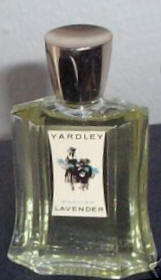
Yardley's Old English
Lavender Toilet Water
My mother had to get up at 5 in the morning to help Mr. Woodward with some necessary private procedures. I helped her later when she began to have trouble lifting. I imagine Mr. Woodward may have spoken to her more freely about his troubles during these quiet early hours, but she kept all that to herself.
Both the front hall and the bedroom had doors opening into the bathroom. On the far wall the sink was built out for the wheelchair. It always, always, held a bottle of Yardley Old English Lavender Toilet Water, a square bottle with flat edges, and a picture of 3 ladies on it. Under the window to the back yard stood a low bench with plants and a yellow pitcher with raised pink roses. Mr. Woodward always liked a touch of yellow in a room!
Part 3: Mr. Woodward at the Southwick Place
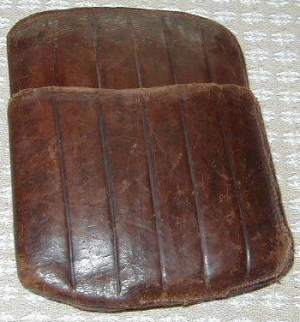
Mr. Woodward's cigar case
My mother made or modified all Mr. Woodward's suits up in her sewing room, always 2 pairs of pants for every jacket. The pants were cut short to the waist in front, and extended in the back, because he was always sitting. He was most particular about the length of the jacket sleeves, and the trouser cuffs had to show just the right amount of socks above his brown shoes. She put 4 slits in the pants just above the knee for his leg braces and straps.
Even at home, Mr. Woodward dressed formally in a shirt and tie, so it was quite surprising to me the day I saw him wearing a cream-colored jersey shirt with a front placket when we were up in Heath.
His shoe heels were buckled into the footboard of his wheelchair to keep them in place, and one foot hung down. But sometimes the nerves in his legs would throw him, and he would pitch forward, even with the buckles. I can tell you, our nerves got pretty jittery when he leaned down to pick something off the floor! If his legs jumped during meal times, it jarred the dining table. He hated that. I remember him once saying, "There must be someone, somewhere, in these United States who can help me." I wish there had been.
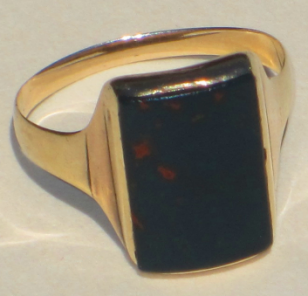
Bloodstone ring worn by both RSW & his father
And he always wore gloves outdoors. His hands were very red, and they sort of shook but not when he was painting! When he was ready to take that first stroke, even if he had to hold one hand with the other, his hand was very steady.
Whether he was painting or not, Mr. Woodward stuck to his daily routines. On a typical day, he wouldn't stay in the house. Soon after breakfast he'd be out and about, or just in the studio all day. He ate alone or with his mother in the dining room, though as often as not he would have his midday meal brought out on a tray to the studio. His lunch would be quite simple, a bowl of soup and crackers. He was particularly fond of soda crackers. Occasionally he invited guests for supper in the studio. He and my mother planned the menus together. (She carved flowers out of turnips as decoration). But even if he didnt have company, he spent evenings in the studio, listening to his radio programs, and then classical music afterwards. The radio couldn't show, of course. It was set behind the curtain opening to the plant room. And, he wrote letters. He sat in the southeast corner of the studio, and wrote, and wrote.
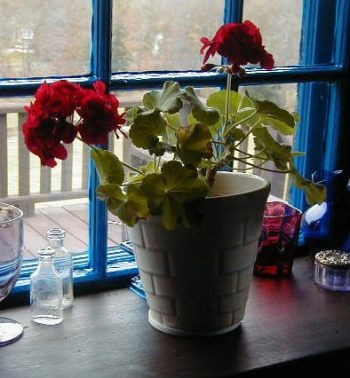
Mr. Woodward's favorite plant, the geranium
Everyone knows he was a horse lover, but Mr. Woodward had dogs, too. His two Irish setters, Sean and Terry, would often sit on each side of him. One time when some passing dogs barked at Sean or Terry, I recall him saying to my mother, "Look at that dog, he just sits there and be's barked at. Well, how else would you say that, Lena?"
Despite all the difficulties of his life, Mr. Woodward had a great sense of humor. He got a kick out of some of the funniest things, and loved visits from his neighbors and friends. One next door neighbor was Harold Williams: he was round, had red hair, wore a French beret, and played the saxophone. Quite the eccentric. Mr. Woodward called him "The Baron."
Our next-door neighbor on the other side was Warren Gould. I will never forget the day he came to visit Mr. Woodward, having dyed his white hair black. Mr. Woodward quite naturally remarked on it, and Mr. Gould replied, "it said on the box that no one would notice!"
One of his closest friends, Miss Dow, had a good sense of humor too, and when the two of them got together, I loved to hear him laugh.
I have difficulty when people ask me if Mr. Woodward had any bad qualities. Of course, no one would deny that he was very particular, and he could be impatient when things didnt go well. A strong-minded man, he was just like my Uncle Fay and they fought like brothers. One time while he was carrying Mr. Woodward, Uncle Fay got so mad that he threatened to drop Mr. Woodward over a bank! (Of course, he never did any such thing.) But after all, they had been together so many years that these fights were really like family disputes. Eventually, though, they had one final battle and Uncle Fay left for good. It was sad, because I think deep down they were fond of each other.
But if you want to know what I liked best about Mr. Woodward, that's easy. It was his great kindness and generosity to my mother and me. What a privilege it was to have known such a remarkable man.
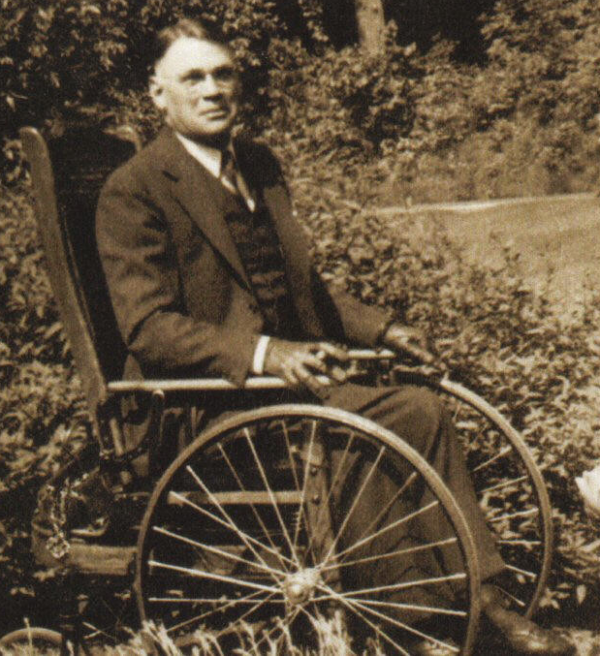
Robert Strong Woodward on the Southwick House terrace


